
Shoe and clothing sizing are often fraught with confusion. Between the differences in foreign sizing and men's and women's sizes, there seems no consistency in brands or cuts. Two pairs of shoes can be marked the the same size, yet fit entirely differently, depending on how they are constructed. When looking at terms such as “narrow” or “AA,” there are many differences to note.
Dress Shoes
In dress shoes and boots, narrow is typically considered an “A” rating or smaller. This includes “AAA” and “AA.” Some companies denote the smaller versions as extra narrow, but it all depends on the brand. In general, the widths differ by 3/16 of an inch, but the actual width number depends on what size you begin with. For example, a men’s size 8 shoe has a AA width of 3 inches, while a size 9 shoe has a AA width of 3.1 inches. If you have a particularly long foot, you might need a shoe deemed narrow to make up for the additional length.
Tennis Shoes or Trainers
In most tennis shoes, AA and narrow denote the same width for women’s shoes. It is considered one step narrower than the standard size. In Men’s trainers, AA tends to mean extra-narrow, while narrow is labeled as “B.” Depending on the brand of the shoe, the toe box -- the space containing the toes -- might be wider, and you may need an even narrower shoe to accommodate the wider toe area if your foot is slipping. Many runners prefer a wide toe box, with the rest of the shoe fitting snugly through the arch and the heel to prevent slipping.
Considerations
When looking for shoes and boots, consider the type of foot covering you plan to wear with the shoes. While in the store, a narrow shoe could seem comfortable, but if you plan to wear the shoe in the winter with thick socks, you could experience uncomfortable pressure on your feet. Also, take into account the long-term wear on the shoe itself; leather shoes tend to stretch. While a narrow shoe might be uncomfortable at first, after a period of time, it could fit correctly due to the expanding leather.
Comparative Sizing
When shopping for shoes, compare sizes. Instead of relying on numbers and width labels, take a pair of shoes that fit you comfortably and compare them physically to new shoes; this provides a visual comparison. Shoe manufacturers tend to go by standard sizing charts, but width for some shoes refers to the sole of the shoe, not the space available inside the shoe. If there is extensive padding, you might need a normal-width shoe to accommodate the extra thickness.
Related Articles

What Does Shoe Width E, EE, D, and DD ...

Medium D Vs. Wide EE Shoe Size

What Does E Mean in Boot Size?
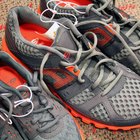
How to Compare Men's Shoe Size to Boys' ...

The Differences in Men & Women's Shoes

Shoe Sizes Explained
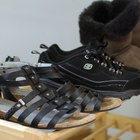
How to Measure Shoe Width Size

How to Convert a Shoe's Size to ...

How to Find Fashionable Shoes for Women ...

What Are the Benefits of High Heel ...

Difference Between Women's Wide & EEE ...
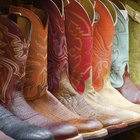
How to Measure Foot Size for Cowboy ...
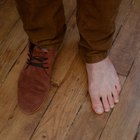
How to Size Wide Shoes
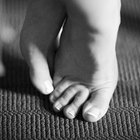
How to Determine the Width of ...

What Is the Shoe Size for a 4-Year-Old ...
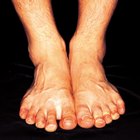
How to Measure Your Feet With a Regular ...

What Kind of Body Types Do Levi's Jeans ...
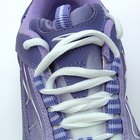
Is a Kids' Size Six Shoe the Same as a ...
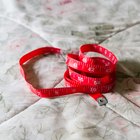
How to Convert Men's Clothing Sizes to ...

How to Make Your Sneakers Fit Better if ...
Writer Bio
Pharaba Witt has worked as a writer in Los Angeles for more than 10 years. She has written for websites such as USA Today, Red Beacon, LIVESTRONG, WiseGeek, Web Series Network, Nursing Daily and major film studios. When not traveling she enjoys outdoor activities such as backpacking, snowboarding, ice climbing and scuba diving. She is constantly researching equipment and seeking new challenges.
Photo Credits
Photos.com/PhotoObjects.net/Getty Images